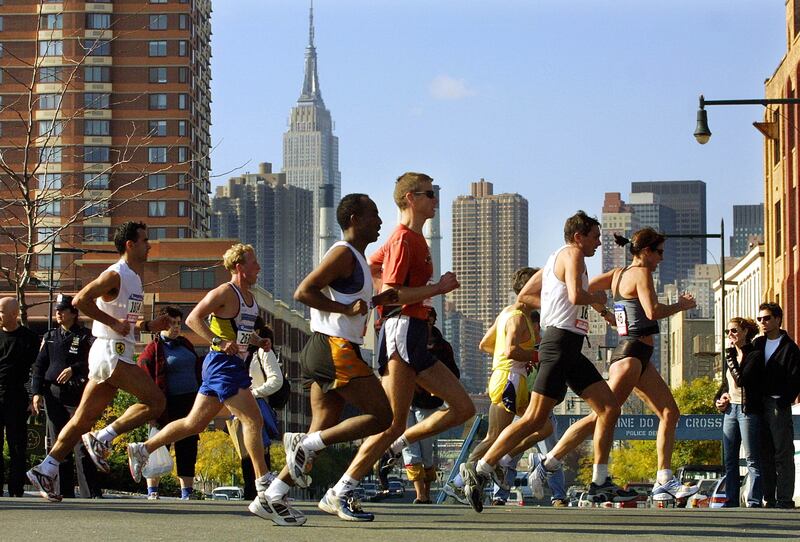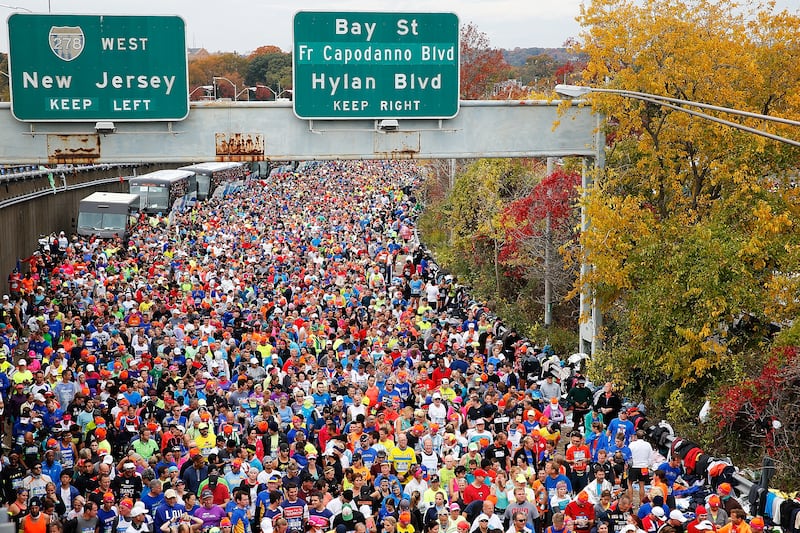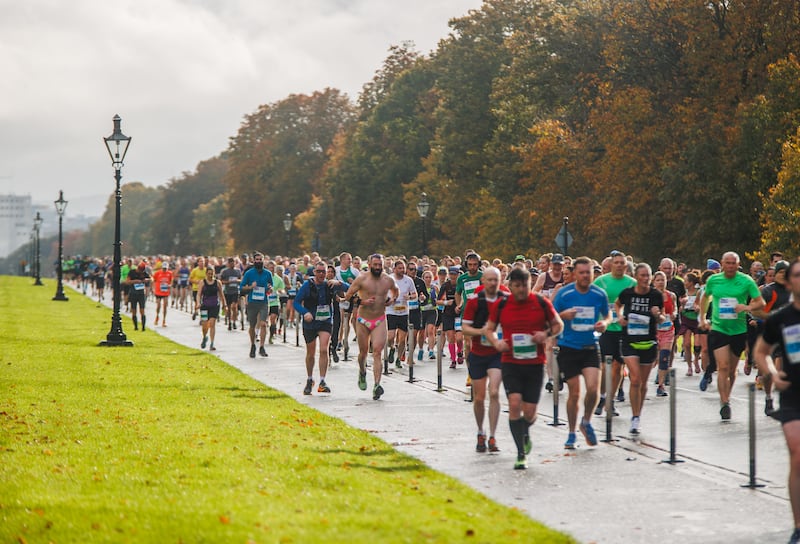We were taken away by busloads in the still dark hours before dawn, hurriedly dressed in all the clothes we could wear, our last essential items thrown into otherwise empty refuse sacks. There was no telling when we’d be back.
Through the silence of the journey, unknown to almost all of us, there was only the murmur of a prayer, before on arrival we were promptly spread out into our holding tents, huddling together to keep warm.
And only here, in the wide expanse that is Fort Wadsworth on Staten Island, had we at last made it to the start of the New York City Marathon.
Suitably sweetened up again with free coffee and Dunkin’ Donuts, our spirits were soon soaring, with roughly 45,000 of us counting down to our gun time, and then joining the charging mass of runners across the Verrazzano-Narrows Bridge.
That was back in 2009, when an entry into the 40th running of the New York Marathon luckily opened up with my name on it.
Still that day stands above anything else in my marathon running experience – and the most fun too (with the possible exception of Honolulu, a veritable paradise of running out and back along the Waikiki shoreline and all the while blessed by the aloha spirit).
What sets New York apart is how so much of the city embraces and celebrates and ultimately “gets” the event. Including a sort of worshipping of the runners involved. As is generally the case with any big city marathon, and especially the other five majors – Tokyo, Boston, London, Berlin, and Chicago. It’s all big business too, not just in New York, which always helps. Good luck with getting a table in Little Italy the night before.

New York doesn’t just impact on Manhattan, but on 26.2 miles of the streets in all five boroughs, and this Sunday’s 52nd running of the event will be no different.
From the start on Staten Island and over into Brooklyn, heading up to Queens and over the Queensboro Bridge on to Manhattan, then up into the Bronx and back into Manhattan again for the finish in Central Park, there will be a wall of noise supporting the runners, which effectively rings true around the entire city.
It also helps that people can still get around on the subway to move around the city, but there’s something else in this level of embrace and support. New York has an extraordinary completion rate every year, including in 2019, when of the 54,205 runners crossing the start line on Staten Island, a marathon record of 53,627 finished – a mere 578 dropping out, making for a 98.9 per cent completion rate.
New York is not unique in embracing some of its iconic city landmarks, including the final long stretch down Fifth Avenue.
The Paris marathon, with 47,495 runners last year, starts along the Champs-Élysées; London finishes in front of Buckingham Palace; Tokyo naturally passes the Imperial Palace; and the Boston Marathon, running since 1897, finishes in the popular public space that is Copley Square.
On Wednesday of this week, World Athletics presented the governing mayor of Berlin, Kai Wegner, with a Heritage Plaque to honour the city’s long embrace of running, going back to the 1890s, and now including the Berlin Marathon, which starts and finishes at the Brandenburg Gate.

First run in 1974, it’s also grown into one of the world’s largest (with 43,010 finishers this September) and fastest. It’s become a model marathon in other ways, all Berlin entrants enjoying free public transport for their arrival, departure, and throughout the day of the event.
All of which takes me to last Sunday’s Dublin Marathon, where one of the perhaps not minor inconveniences to runners was the cancellation of all northside DART services, throughout the bank holiday weekend, due to engineering works. Did they know or even consider that the marathon was happening?
There was always going to be some disapproval about the typo/misquote on the Dublin Marathon finisher’s medal – Diarmaid Ferriter using some melodramatic licence to describe it as a “travesty” – but trust me, some marathon runners consider those medals completely worthless anyway.
The race organisers were being a little more polite when talking beforehand about the increasing “infrastructure restrictions” being presented along the marathon course, the difficulty in navigating around them, and their efforts to get some of them removed, if only for one day. A small travesty perhaps if that reluctance is how some parts of the city embrace the marathon.
There are, it seems, some recurring numbers – the estimated €9 million the marathon raises each year for its charity partners, or the €26.5 million it’s reportedly worth to the city – but at a time when some Dublin publicans reckon the city centre is becoming a “vacuous void” then this run of business on a Sunday afternoon should certainly be embraced.
Most marathon runners love to amaze each with how much they can eat and drink afterwards, no matter what they’re paying.

The traffic restrictions inevitably bring about some disruption, and indeed letters to this newspaper, one of which bemoaned the shutting down of access to the city “for all but a select few, stopping buses and causing traffic chaos in the greater Dublin area” before adding: “Why should more than one million people have to forfeit one of their few bank holiday weekends for the benefit of a few tens of thousands of marathon participants and associated fans?”
There was a neat response from a reader pointing out how the “marathon has rejuvenated the city on what was once a dreary holiday weekend,” and already looking forward to the 43rd Dublin Marathon next year.
And the “associated fans” were unquestionably out in force again on Sunday, despite the occasional torrential rain, and many were still out there on the route six hours after the race started.
Still, there is that sense there are many parts of the Dublin Marathon just about tolerated by the city, rather than embraced, and certainly not celebrated quite like New York and elsewhere.
Maybe that will always be the case although, ultimately, no one comes away from running any marathon without being in a fitter, healthier and more productive physical and psychological state than before they started.
At least not in my experience, and what kind of sick people still don’t understand that?















